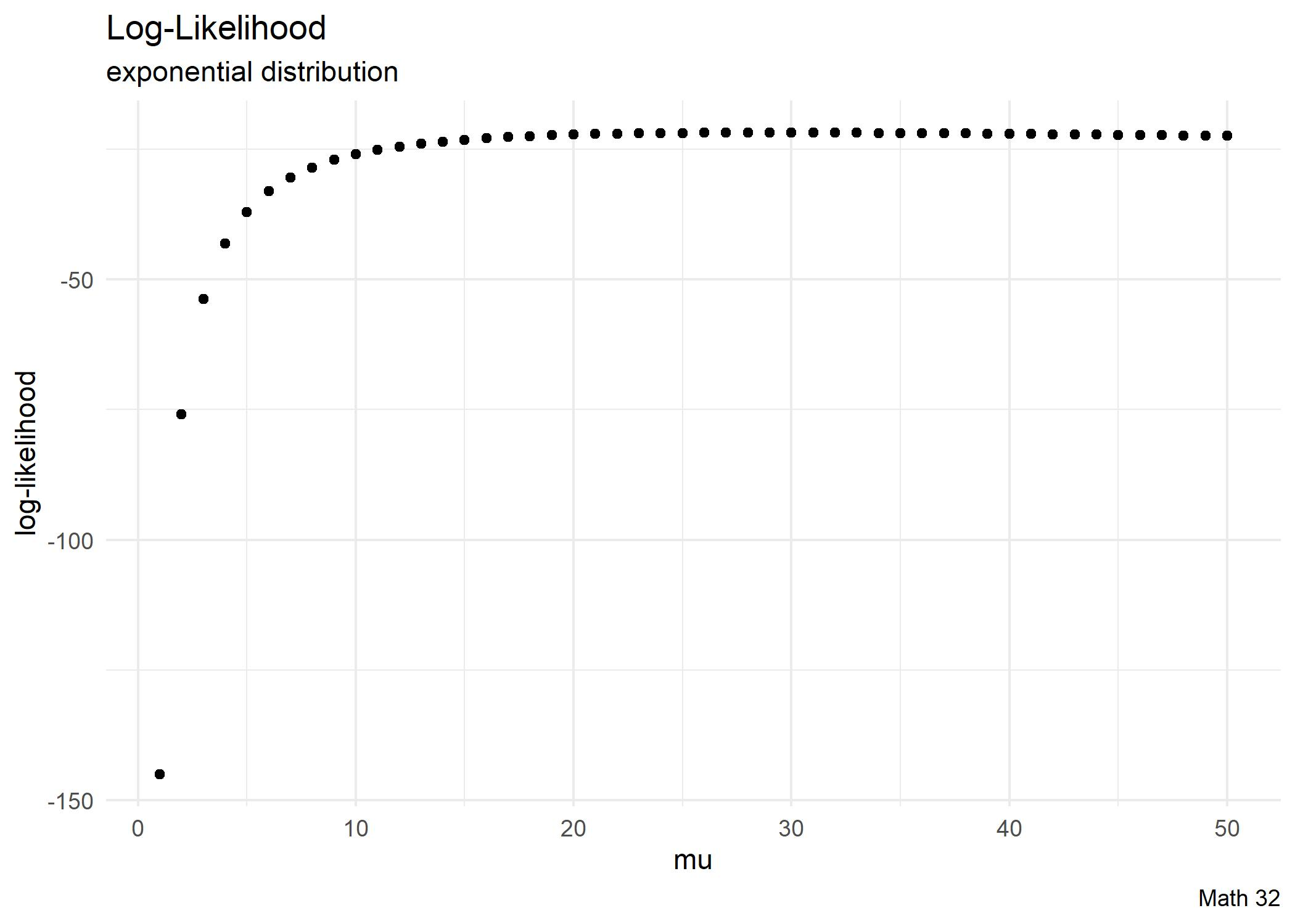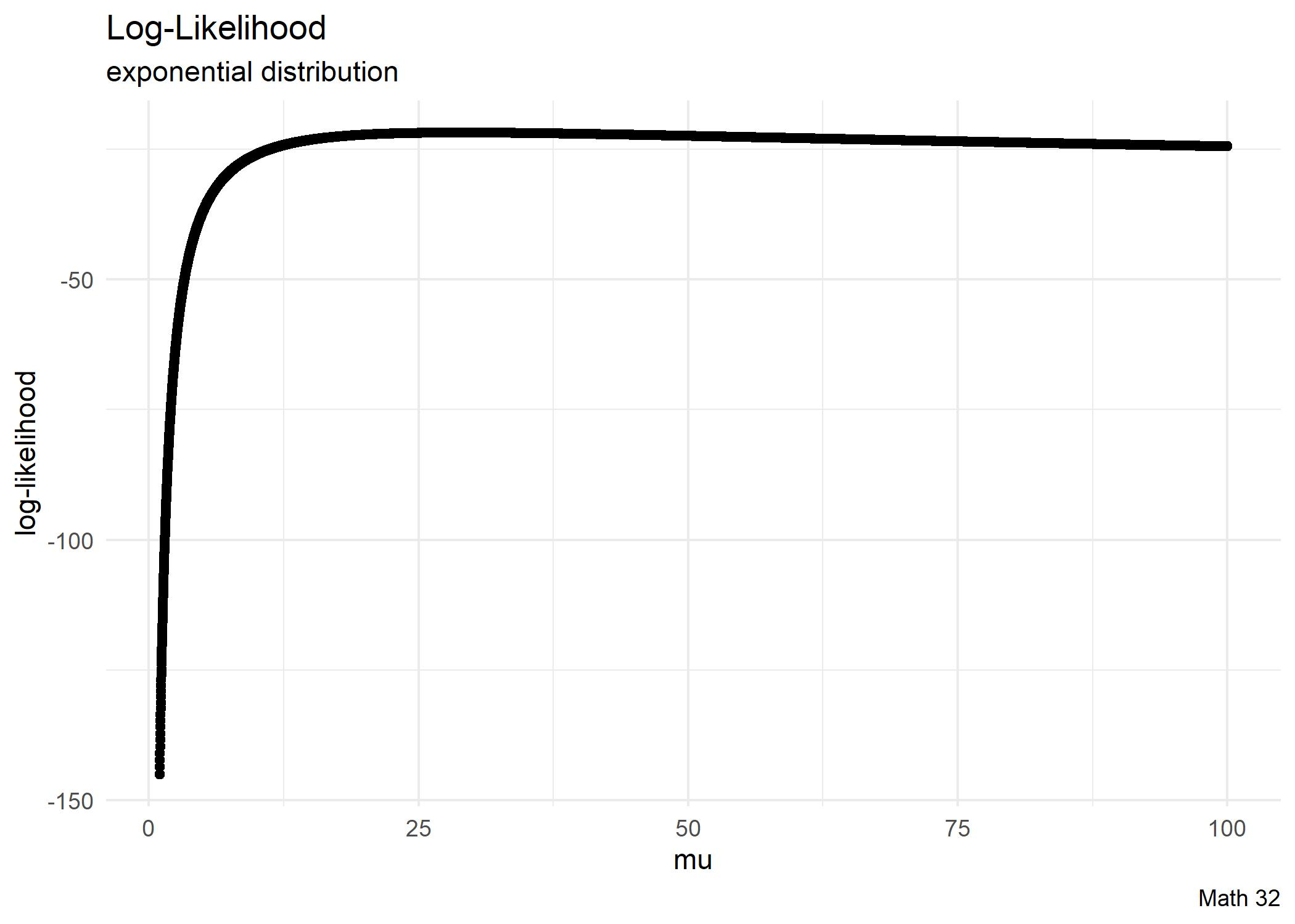Notation
Recall,
- Lower-case
- Upper-case
- Treating
- With independence,
- Each individual probability is computed (at least theoretically) with a PDF (probability density function)
Inverse
Suppose that we have a sample of data
- Since the prior probability
… we say that the posterior probability is proportional to the likelihood.
Likelihood
Let the likelihood function, in terms of a parameter
or
Suppose that we have data for how long a certain type and brand of light bulb operated (in the same working conditions), and that data in months was
- Build the likelihood function assuming an exponential distribution.
- Compute the likelihood that
- Compute the likelihood that
Log Likelihood
You know that logarithms make large numbers smaller. More precisely,
Example:
Did you know that logarithms make small numbers larger (in size). More precisely,
Example:
From pre-calculus, recall the properties of logarithms:
For modeling with the exponential distribution, we saw that the likelihood function was
We take the natural logarithm to compute the log-likelihood function
- Compute the log-likelihood that
- Compute the log-likelihood that
Visuals


Looking Ahead
WHW9
Exam 2, Mon., Apr. 10
- more information in weekly announcement
